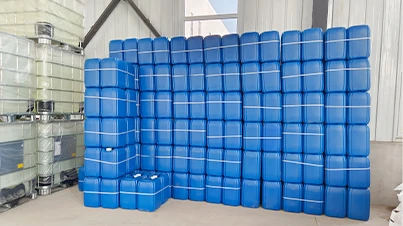coagulant and flocculant chemicals
Understanding Coagulant and Flocculant Chemicals in Water Treatment
Water treatment is a crucial process aimed at improving the quality of water for various uses, including drinking, industrial processes, and environmental protection. Among the key components in water treatment are coagulant and flocculant chemicals, which play a vital role in the removal of suspended solids, colloids, and other impurities from water. This article delves into the roles of these chemicals, their mechanisms, and their significance in water treatment processes.
What are Coagulants and Flocculants?
Coagulants are substances that promote the agglomeration of fine particles in water, causing them to clump together and form larger particles known as 'flocs.' This process is essential in water treatment, particularly for the removal of turbidity and other impurities. Common coagulants include aluminum sulfate (alum), ferric sulfate, and polyaluminum chloride. These chemicals work by neutralizing the electrical charges that keep particles suspended, allowing them to collide and form larger aggregates.
Flocculants, on the other hand, are substances that assist in the consolidation of these flocs by further binding them together. They are typically high molecular weight polymers that enhance the settling of solids in water. Flocculants can be synthetic or natural, with examples including polyacrylamides and starch-based derivatives. While coagulants eliminate initial turbidity, flocculants enhance the efficiency of the process by promoting faster settling and efficient removal of the flocs.
Mechanism of Action
The coagulation and flocculation processes generally proceed in several steps. First, the coagulant is added to the water, where it dissolves and begins to neutralize the electric charges on the particles. This leads to the formation of microflocs, which are small aggregates of particles. Following this, flocculants are added to promote the growth of these microflocs into larger, more settleable flocs.
coagulant and flocculant chemicals

Rapid mixing is crucial during coagulation to disperse the coagulants thoroughly, ensuring that as many particles as possible are impacted. Once flocs are formed, gentle mixing helps to encourage floc growth without breaking them apart. Finally, the mixture is allowed to settle, where gravity separates the heavier flocs from the clarified water.
Importance in Water Treatment
The relevance of coagulants and flocculants extends beyond simple water clarity. Their use significantly impacts the efficiency and effectiveness of water treatment systems. Proper application of these chemicals can lead to reduced chemical consumption, lower operational costs, and improved water quality.
In drinking water treatment, the removal of pathogens and contaminants is paramount. Coagulants and flocculants help achieve this by efficiently removing algae, bacteria, and viruses along with particulate matter. Moreover, in industrial applications, they assist in various processes, including wastewater treatment, where efficient removal of solids can lead to better compliance with environmental regulations.
Conclusion
Coagulant and flocculant chemicals are indispensable in the field of water treatment, contributing to the safe and efficient delivery of clean water. By understanding their properties and functions, water treatment professionals can optimize their use for enhanced treatment performance. As the world faces increasing water scarcity and pollution challenges, the role of these chemicals becomes ever more critical in ensuring sustainable water management practices. Whether for municipal water supplies or industrial applications, the applications of coagulants and flocculants represent a cornerstone of modern water treatment technology.
-
Water Treatment with Flocculant Water TreatmentNewsJun.12,2025
-
Polymaleic AnhydrideNewsJun.12,2025
-
Polyaspartic AcidNewsJun.12,2025
-
Enhance Industrial Processes with IsothiazolinonesNewsJun.12,2025
-
Enhance Industrial Processes with PBTCA SolutionsNewsJun.12,2025
-
Dodecyldimethylbenzylammonium Chloride SolutionsNewsJun.12,2025





